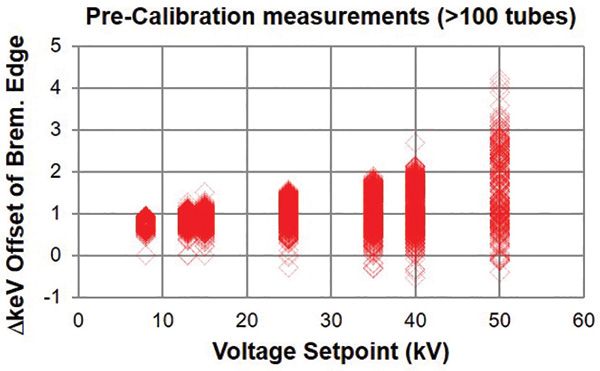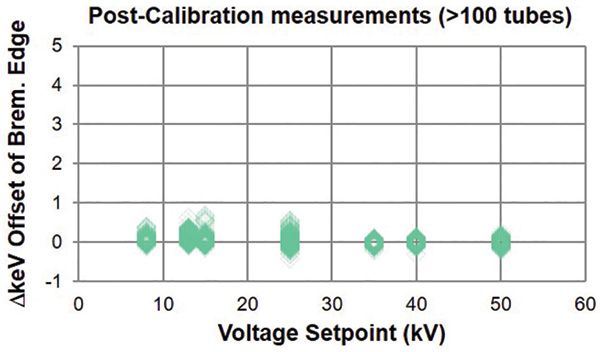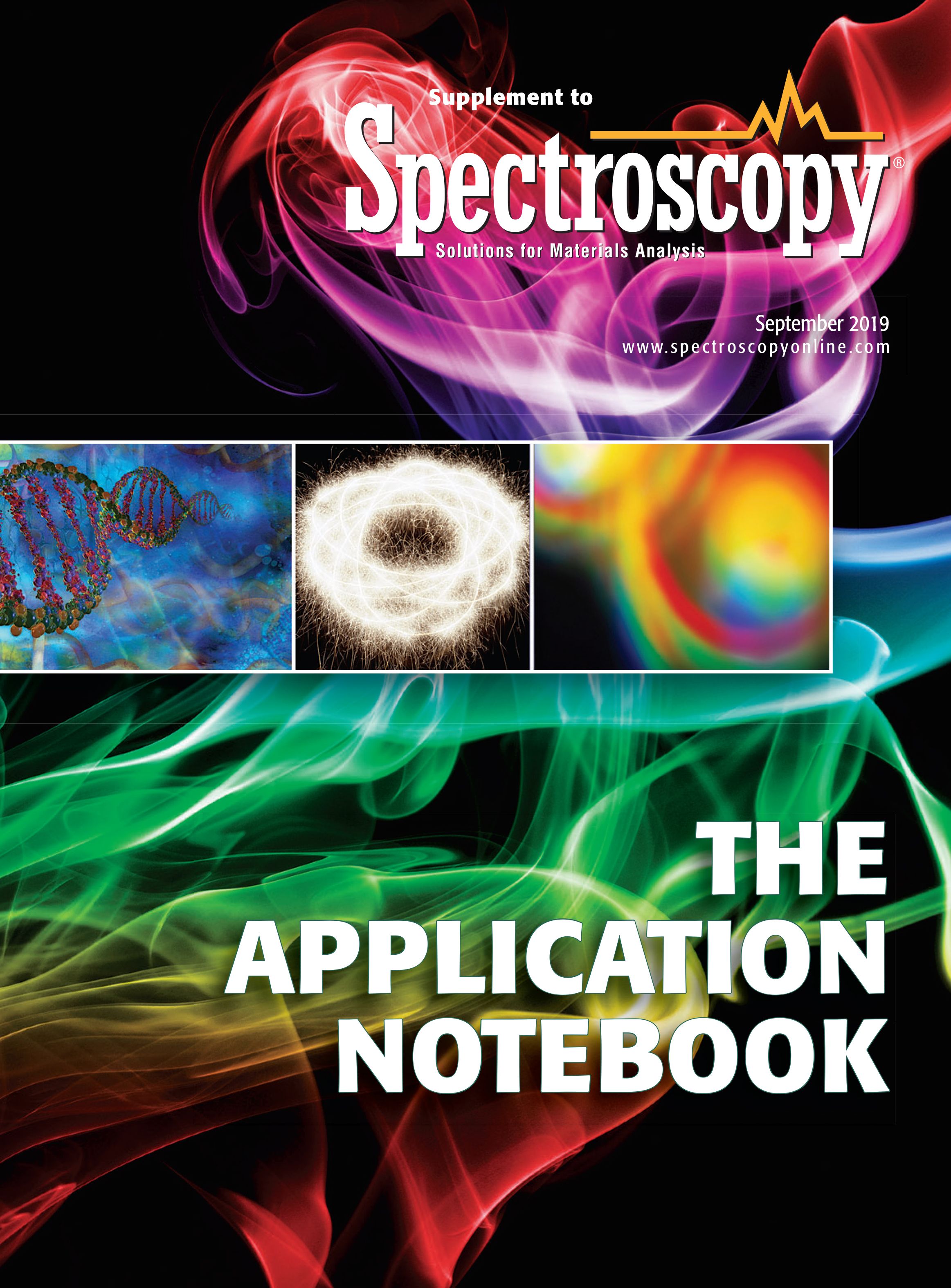High Voltage Accuracy and Precision on Small Compact X-ray Source
Moxi™ X-ray source is calibrated to within ±250 V over all settings between 5 to 50 kV. This impressive accuracy and precision is achieved spectroscopically, by measuring an X-ray spectrum's bremsstrahlung edge and storing correction high voltage offset information on each source.
One optimization desired by manufactures of X-ray fluorescent (XRF) instruments is X-ray sources that are spectroscopically identical. A spectroscopically identical X-ray source allows one to switch out an X-ray source in an instrument with no other changes to the instrument, for example, with minimal or no recalibration of the instrument. This benefit is desired by handheld XRF manufacturers, which reduces XRF calibration effort and service time for XRF instruments. Each Moxi™ X-ray source is calibrated to within ±250 V over all settings between 5 to 50 kV. This voltage accuracy is tight enough to allow for XRF equivalence for several XRF applications.
Experimental Conditions
In order to calibrate an X-ray source, two basic requirements are needed:
- A meaningful and accurate way to measure the high voltage.
- A way to store the high-voltage calibration information on each X-ray source, offsetting source-to-source differences due to variance in the source's electrical components.
The X-ray source's high voltage is measured by collecting an X-ray spectrum from the tube's anode. The source is pointed directly at an energy-dispersive detector, with a pinhole in-between to limit the intensity from the X-ray source. The spectrum's bremsstrahlung edge is fit with a proprietary algorithm, giving the value of the bremsstrahlung edge in keV. This measurement provides the "spectroscopic" voltage in keV, while the electronic monitors on the X-ray source give an electronically measured voltage in kV. The difference between the two gives a correction factor, which can be used to tighten the accuracy and precision between these two values. This test is repeated over several tube voltage settings between 5 and 50 kV.
The variance in the electronic components in aggregate is the major driving factor for the high-voltage inaccuracy of any particular X-ray source. The electronic components have a partially nonlinear relationship with high voltage. The Moxi™ X-ray source has an onboard memory which can hold a correction factor to correct for the nonlinear relationship.

Figure 1: This graphic shows the offset between the tube's set voltage and bremsstrahlung edge over seven setting's precalibration, on over 100 separate X-ray sources. Precalibration, the high voltage is typically offset by 800 V, and can vary by up to ±1000 V (@35 kV).
Results
Comparing Figures 1 and 2 shows the accuracy and precision of the high voltage on the X-ray sources is drastically increased by the high-voltage calibrating procedure. These graphs are intentionally at the same scale to easily show the improvements.

Figure 2: This graphic shows the offset between the tube's set voltage and bremsstrahlung edge over seven settings post-calibration, on over 100 separate x-ray sources. Post-calibration, the high voltage is typically offset by 100 V, and can vary by up to ±250 V (@35 kV).
Conclusions
Moxi™ X-ray sources are an "XRF equivalent" X-ray source for XRF instrument manufacturers. The key aspect for achieving this source's spectral equivalence is the high-voltage calibration of the source. Each digital X-ray source is calibrated to within ±250 V over all settings between 4 to 50 kV. The high accuracy and precision is achieved spectroscopically by measuring the bremsstrahlung edge and storing high-voltage offset information on each source. This benefit is very much desired by handheld XRF manufacturers and reduces XRF calibration effort and service time for XRF instruments. This quantification has practical backing; it is working as intended in next-generation XRF handheld instruments sold today.

Moxtek, Inc.
452 West 1260 North, Orem, UT 84057
tel. (801) 225-0930, fax (801) 221-1121
Website: www.moxtek.com
